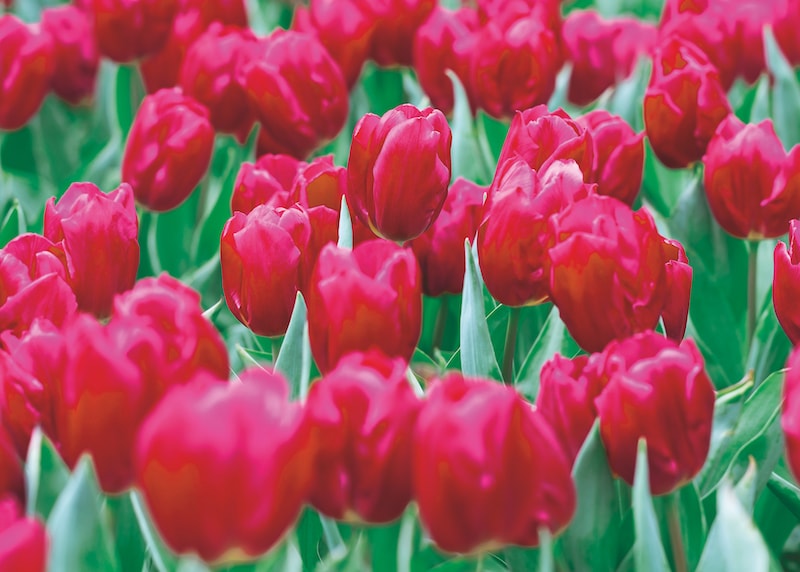Nothing says ‘spring is here’ quite like the appearance of snowdrops, crocus, daffodils and other classic springtime flowers. But to ensure a timely display, you need to get your bulbs in the ground at the right time. September is the perfect month to start planting most spring bulbs, and November for tulips.
Take a look at our extensive selection of spring bulbs for inspiration.
How to choose the best quality spring bulbs
The best quality bulbs are firm, feel heavy for their size and are free from mould and mildew. They shouldn’t be sprouting (though a little green at the neck is ok) or display any active root growth.
Buying your bulbs in late summer will give you more choice, especially if you’re planning a particular colour scheme. If you already have bulbs stored from last year, check them thoroughly and discard any that are soft, withered or damaged.
The best time to plant your spring-flowering bulbs

Image: Iris ‘Katharine Hodgkin’ from Suttons
The best time to plant most spring-flowering bulbs is September, although this can vary slightly according to variety. Tulips are the main exception, and shouldn’t be planted until November.
Most gardeners recommend getting your bulbs in the ground about six weeks before the soil starts to freeze. They then need a period of time in the cold ground before they flower. You can, of course, plant your spring bulbs later than this, but they might bloom for a shorter period of time in their first spring.
How deep to plant your spring-flowering bulbs

Image: Crocus ‘Value Mix’ from Suttons
As a rule of thumb, bulbs should be planted at about two-to-three times the depth of their height, but always check the packet instructions to be sure. Simply dig a hole, drop in a bulb and cover over again. If you’re planting up a lot, you may wish to invest in a bulb planter. These handy tools work by removing a plug of soil to the correct depth, which you can then release on top of your bulb at the push of a button.
Don’t worry too much about planting your bulbs a certain distance apart. Getting the depth right is more important, as shallow planting can cause problems (like daffodils coming up ‘blind’ or flowerless, for example). Conversely, plant them too deep and they might never break the surface. It’s also important to make sure your bulbs don’t touch each other (or the sides of the container, if planting in pots), as this can cause them to rot.
For a more natural look, plant your bulbs close together (but not touching) so the flowers pop up in clusters. If growing them in grass, simply scatter your bulbs across the surface and plant them where they land. They will self-seed and propagate themselves in subsequent years, resulting in a more natural-looking distribution. Read our article on how to naturalise spring bulbs for more information.
How to care for your spring-flowering bulbs

Image: Tulip ‘Barcelona’ from Suttons
Spring-flowering bulbs do well in pots, borders, hanging baskets, under trees, or even in the middle of the lawn, so it’s entirely up to you where you plant them. They generally love a sunny spot but some can cope well in partial-shade. Check the packet instructions for specifics.
Spring bulbs grow best in well-drained soils, so if yours is on the heavy side you might want to mix in a little sand or grit, as well as digging in some compost or well-rotted manure to help with drainage. If growing in pots, some broken pieces of pottery in the bottom of the container will help it drain.
Waterlogged bulbs are likely to rot, so take care not to over-water. That said, certain types need regular watering in order to flower successfully. Tulips, for example, need a steady supply of water in the three to four weeks before flowering. A dry spell at this crucial time can result in stunted tulips with smaller flowers and stumpy stems.
What to do after your spring bulbs have flowered

Image: Daffodil ‘Sunshine Mix’ from Suttons/Copyright: Van Bourgondien
Once your bulbs have finished flowering, deadhead them by removing the flowerheads and seed pods (unless you want them to self-seed) and then leave the green foliage to continue converting sunlight into energy for the bulb.
Spring bulbs continue to produce flowers for several years provided they have sufficient energy stored. To ensure they get the energy they need, resist the temptation to cut the foliage back until it has turned straw-coloured. If you feel this would spoil the general appearance of your garden, grow your bulbs in containers so you can move them out of sight while you’re waiting for the foliage to die back.
Growing your bulbs under trees or at the edges of lawns will make dying foliage less conspicuous, but if you really can’t bear an untidy garden then cut the drooping leaves back earlier and treat your bulbs as annuals, replacing them the following year.
Hardy bulbs can stay in the ground over winter, but others may need lifting and storing. To do this, carefully dig them up, brush off loose soil and remove any remaining foliage and the bulb’s flaky outer coating. Leave them to dry and then store in a paper bag. Bulbs can be kept in this way for up to 12 months.
Planting your spring-flowering bulbs at the right time and depth this autumn will give you the best chance of healthy, beautiful flowers next spring. See our step-by-step guide on how to grow spring-flowering bulbs along with our best expert advice on growing spring-flowering bulbs for more advice.





